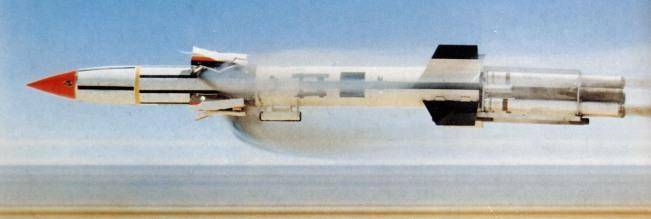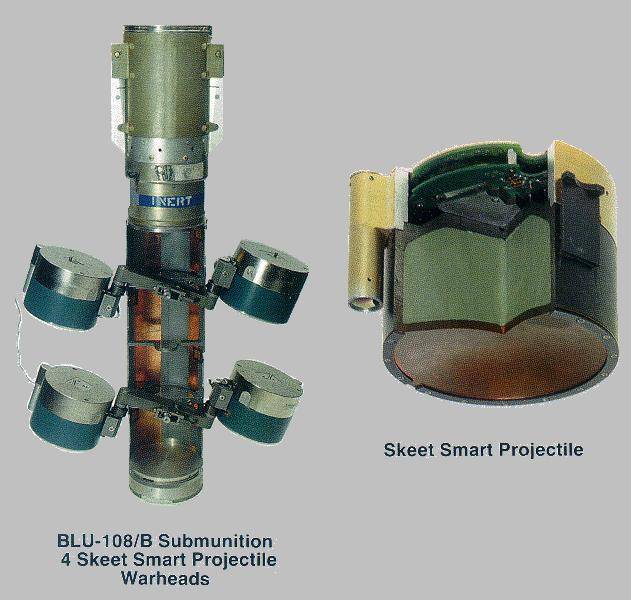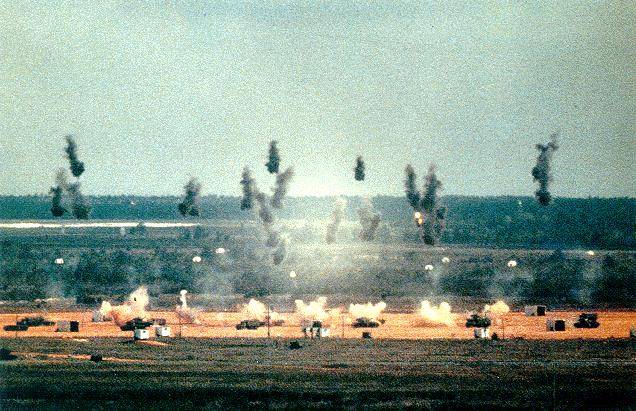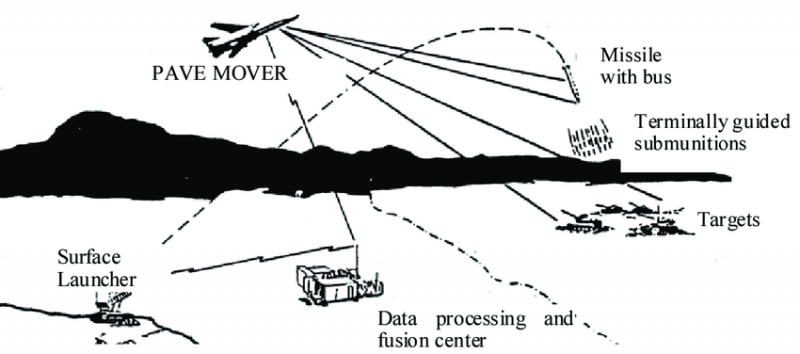The program DARPA Assault Breaker II: the idea is old, the technology is new
Old new idea
In recent years, there has been a significant increase in the combat capability of the armies of Russia and China, causing concern to the United States. Washington is developing various plans aimed at containing potential adversaries in a number of regions. The development of the Advanced Research Agency DARPA plays an important role in this process.
A few years ago, DARPA began a new study of the concept proposed earlier in the Assault Breaker project. It was planned to evaluate its prospects in the context of a modern armed conflict, make the necessary changes and, if there are real advantages, bring it to the design and implementation stage in the troops.
The project, called Assault Breaker II, is still at the preliminary design stage. The finished complex can be put into service no earlier than the end of the twenties - provided that the project is not closed earlier. In connection with the early stage of work, most of the data has not yet been published, but the most general information is already known. Some of the data appeared in official reports, while other information was leaked to the media from unnamed sources.
At the new technical level
According to the available data, while the Assault Breaker II program provides for the use of old ideas, implemented with the use of current technologies and the element base. At the same time, goals and objectives, as well as the composition and principles of the complex, do not change.
Recall, the Assault Breaker system in its original form included several main components. The first is the E-8C JSTARS detection and target aircraft with an AN / APY-3 radar. It was planned to use B-52H bombers or other aircraft as well as ground launchers as weapons delivery vehicles. These platforms were supposed to use an Assault Breaker missile carrying a cluster warhead with homing anti-tank BLU-108 / B anti-tank submunitions. The latter were completed with charges like Skeet. The complex also included the appropriate means of communication and control.
The Assault Breaker system was to be applied in the event of an open conflict and an attempt to break through the “tank avalanche” of the Warsaw Pact countries. When data appeared on the advancing tanks, JSTARS aircraft had to follow tank-dangerous directions, find enemy armored vehicles and target B-52H bombers. Their task was to launch guided missiles in areas where the enemy’s reserves were located.

Experienced rocket Martin Marietta T-16. Photo Designation-systems.net
According to the plans of the early eighties, several E-8C aircraft were supposed to support 12 bombers. Each B-52H could carry Assault Breaker missiles on board the 20. Developed missiles carried from 10 to 40 individual combat elements, each of which had 4 shaped charge. Thus, the enemy’s ground forces could simultaneously send 240 missiles with 2400-9600 submunitions - 9600-38400 shaped charges.
It was assumed that even with the 50-percent probability of hitting a tank or armored vehicle, the B-52H squadron would cause unacceptable damage to the enemy. Deprived of reserves, the enemy will be forced to stop the offensive.
However, the Assault Breaker system was never created and put into service. In the late seventies, two missiles with cluster warheads - T-16 from the company Martin Marietta and T-22 from Vought - brought to the test. Both products proved to be bad. The lack of real success and significant cost led to the closure of projects and the program as a whole. Work on Assault Breaker stopped at the end of 1982 and no longer resumed.
Now DARPA is once again exploring the concept of a closed project and is trying to assess its prospects in the current situation. Apparently, the main goal of current work is to determine the possibility of obtaining the desired work using modern technologies and component base. Perhaps some changes will undergo the basic concept of the project. It can also be changed to reflect the progress of recent decades.
Goals and objectives
The Assault Breaker system of the first version was created to protect against a full-scale offensive by the ATS ground forces having large numbers of armored vehicles. The current work on Assault Breaker II is also associated with a potential threat - as seen in the Pentagon. Recent reports mention that a new complex may be needed to protect against Russia and China.

BLU-108 / B combat element (left) and Skeet shaped charge. Photo Globalsecurity.org
Last year, the Scientific Council at the United States Department of Defense published a report entitled "Study on Countering Systems with Assault Breaker II", which provided data on the new project and its tasks. Among other things, it cited two possible scenarios that justify the development of the Assault Breaker II system.
The first scenario considers a possible conflict in the Baltics. Comparing the forces of the parties, the authors of the report concluded that the Russian army had a quantitative superiority. Even with the ability to deploy troops, NATO will not be able to respond in time to a sudden Russian attack and create the required grouping. The potential of the Russian army in the context of Eastern Europe shows the teachings of the "West" in recent years.
Also, China was considered a potential aggressor. It is able to protect coastal zones, as well as act at some distance from its territory. In particular, an attack on Taiwan is possible, which poses new challenges and demands.
The threat in the face of Russia and China is seen as a worthy excuse for the creation of new weapons systems, including the relatively complex multi-component complex Assault Breaker II. The use of old ideas and new technologies should provide advantages in the fight against a potential adversary.
Plans and reality
While the program Assault Breaker II is at the stage of preliminary study of the technical appearance. Subsequent work may take up to ten years. The real prospects of the program are still questionable. In essence, the goal of current work is precisely to determine the very possibility of successfully creating a new rocket and all associated systems.

Tests BLU-108 / B / Skeet on decommissioned armored vehicles. Photo Globalsecurity.org
The available Assault Breaker II data does not yet allow accurate predictions of its future. Some information may be cause for optimism, while others may provoke sharp criticism. The real ratio of positive and negative qualities of the future weapon system remains unknown.
The development of radio-electronic technologies and progress in rocket technologies that have taken place in recent decades contribute to the emergence of positive assessments. The main problems of the first Assault Breaker project were related to the lack of perfection of the rocket carrying combat elements. Modern component base allows you to get rid of such problems. In addition, it is possible to improve performance in comparison with the systems of the past.
The first project, Assault Breaker, was closed due to overspending of finances amid lack of progress. The second program can comprehend the same fate. Despite the use of mastered products and technologies, the complex as a whole may turn out to be overly complex and expensive. Whether the engineers will be able to solve the problem of cost is not yet clear.
At one time, the concept behind the Assault Breaker complex seemed promising, effective and useful, but its implementation turned out to be extremely complex and was not completed. As events of recent years show, this concept is still considered suitable for use and re-examined in order to resume work. However, the real future of the project is still uncertain. Will the Pentagon get new weapon to protect against the "tank hordes" of the enemy, time will tell.

Information